The Life and Death of Padmé – Without Lore, Is It Just Lipservice for the Leading Lady of Star Wars?
In our review of Darth Plagueis, we praised James Luceno for making a significant contribution to Expanded Universe lore. The novel fills in the backstory of Palpatine without ruining the mystery of the movie saga’s evil mastermind, reveals the rise and fall of the legendary Plagueis the Wise, adds new layers to the political machinations surrounding the decline of the Old Republic in the years leading up to Palpatine’s election as Supreme Chancellor, and gives new depth to our understanding of the Force, midichlorians, and Sith philosophy. Many of the other fan reviews also have rightly applauded Luceno for this achievement.
In her follow-up commentary last week, Tricia noted that while this Sith-focused lore book may not be especially enticing to those Star Wars fans who are less enamored by dark side villainy and chillingly foreboding endings, its debut at #4 on the New York Times hardcover bestsellers list demonstrates that lore books do have a significant audience. The reception of the book serves to illustrate one of the ways the EU can be used effectively to reach a broad range of fans, including those who aren’t necessarily EU-focused but would be interested in movie-focused stories. The still underdeveloped backstories of the saga’s two female leads, Padmé Amidala and Leia Organa, provide the perfect opportunity to bring depth to the EU lore while also tapping into the interests of female fans.
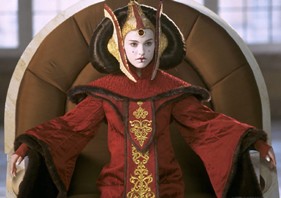 Even more than her daughter, Padmé is the perfect candidate for a female-centered lore book. Compared to the others in the dual Big Threes, hardly anything is known about her life story beyond the movies. Obi-Wan has by far the most, with extensive adventures in the Jedi Apprentice series set before Episode I; he’s then joined by Anakin for the Jedi Quest series and other tales preceding Episode II, and of course a wide range of stories set during the Clone Wars, in both its initial 2002-2005 multimedia run and the current animated television series. Among the Original Trilogy characters, Han Solo has the most development, with a full trilogy of novels portraying his life before A New Hope plus a range of other appearances and references. Luke, of course, was stuck on the moisture farm on Tatooine, but managed to have a few adventures all the same; Leia also has a small number of EU appearances prior to Episode IV and references to other activities with the Senate or the incipient Rebellion.
Even more than her daughter, Padmé is the perfect candidate for a female-centered lore book. Compared to the others in the dual Big Threes, hardly anything is known about her life story beyond the movies. Obi-Wan has by far the most, with extensive adventures in the Jedi Apprentice series set before Episode I; he’s then joined by Anakin for the Jedi Quest series and other tales preceding Episode II, and of course a wide range of stories set during the Clone Wars, in both its initial 2002-2005 multimedia run and the current animated television series. Among the Original Trilogy characters, Han Solo has the most development, with a full trilogy of novels portraying his life before A New Hope plus a range of other appearances and references. Luke, of course, was stuck on the moisture farm on Tatooine, but managed to have a few adventures all the same; Leia also has a small number of EU appearances prior to Episode IV and references to other activities with the Senate or the incipient Rebellion.
For Padmé, we know next to nothing of the events that shaped her into the young woman we see in the films. Why did she stand for election as Queen? How did she campaign, and who were her key supporters and constituents? What kinds of crises, decisions, challenges, and triumphs did she encounter during her seven years as Queen after the events of The Phantom Menace? Did she face any opposition for her appointment as Senator? What took place in her two years on Coruscant prior to the events of Attack of the Clones? There have been hints and little references, here and there, to these aspects of her life, but almost nothing actually portraying her story directly. Until the television series, we also had seen very little of Padmé’s activities to oppose the Republic’s gradual descent into dictatorship during the three-year galactic conflict leading up to Revenge of the Sith. Only in the last few years has The Clone Wars for the first time given Padmé plotlines in which she is the featured protagonist.
It is unfortunately unsurprising, then, that many fans perceive Padmé as a thinly characterized personality. To some extent, the Prequel Trilogy’s dedicated focus on the story of Anakin Skywalker also left Obi-Wan’s onscreen development to fall a bit short, but that was mitigated by the breadth of the corresponding EU material and the familiarity of his older self from the Original Trilogy. And perhaps George Lucas could have added a bit more to overtly display Padmé’s motivations and strengths within the Prequel Trilogy movies themselves, as he has recently done in The Clone Wars. In truth, the heart and soul of Padmé’s character has always been there in the films, as a worthy Star Wars heroine in her own right.
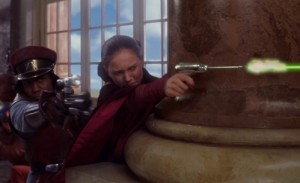 To some extent, Padmé’s perception probably suffers because her clearest, strongest characterization comes in the least popular of the Prequels, The Phantom Menace. Although Anakin is featured in the movie’s biggest setpiece, the Boonta Eve podrace, Padmé actually plays a bigger role in advancing the film’s plot. Her leadership is bold and decisive in fleeing the invasion to plead Naboo’s case to the Senate, dropping the bombshell vote of no confidence in the Supreme Chancellor to break the legislative gridlock, and forging an improbable alliance with the Gungans to retake the planet from the Trade Federation. Padmé is strong-willed, even backtalking Qui-Gon, and unafraid to take risks, including the Senate motion and the plan to infiltrate and recapture the Royal Palace. She never gives up in her determination to save her people, and she is willing to die to ensure victory. Certainly these are heroic qualities right up there with those of her son and daughter over three decades later.
To some extent, Padmé’s perception probably suffers because her clearest, strongest characterization comes in the least popular of the Prequels, The Phantom Menace. Although Anakin is featured in the movie’s biggest setpiece, the Boonta Eve podrace, Padmé actually plays a bigger role in advancing the film’s plot. Her leadership is bold and decisive in fleeing the invasion to plead Naboo’s case to the Senate, dropping the bombshell vote of no confidence in the Supreme Chancellor to break the legislative gridlock, and forging an improbable alliance with the Gungans to retake the planet from the Trade Federation. Padmé is strong-willed, even backtalking Qui-Gon, and unafraid to take risks, including the Senate motion and the plan to infiltrate and recapture the Royal Palace. She never gives up in her determination to save her people, and she is willing to die to ensure victory. Certainly these are heroic qualities right up there with those of her son and daughter over three decades later.
Padmé’s strong personality was again on display in Attack of the Clones, but her relatability was undercut in the eyes of a substantial number of fans when the film may have left the nature of her feelings toward Anakin a bit too subtle. Again her strength of will is on display, showing a willingness to disobey orders on par with his: leaving seclusion on Naboo to join his journey to Tatooine after his nightmares, then deciding to travel to Geonosis to save Obi-Wan, and finally the forbidden marriage itself. In the execution arena, Padmé has already quickly freed herself from the chains and clambered up the pole while Anakin and Obi-Wan are still babbling to each other about their predicament, then rely on assists from the beasts to get themselves loose.
 Less transparent in the film was why she bonded so quickly with Anakin upon their reunion. Perhaps a more overt tip of the hat to mythical “true love” would have added some helpful resonance. The novelization by R.A. Salvatore, and several of the cuts scenes later included on the DVD release, provided more elaboration on her loneliness in a young life dominated to the exclusion of nearly everything else by politics and public service, and the refreshing change of being around a man who simply saw her as Padmé rather than Amidala – and since 2002 I have thought that the film’s portrayal of Padmé would have been improved if those elaborations had been included. Similarly, Padmé’s sympathy for Anakin after his slaughter of the Sand People was not credible to many viewers. Perhaps having Padmé herself agree with the sentiments of Cliegg Lars and Anakin toward the monstrous brutality of the Tuskens would have made her willingness to accept his retaliation more believable, for example. Likewise, given that at the lake house she had insisted they could not give into their feelings for each other, it might have helped to have her more clearly express her change of heart – that after watching him enduring the pain of losing his mother, she could not bring herself to force him to bear the pain of losing her, as well. Padmé was not intended to be enabling of his darker emotions, but rather allowing herself to fill the void in his heart left by his mother’s death with her love – as well as the void in her own heart with his love, allowing her to feel complete as a person and a woman for the first time. This is a vivid instance of the novel format being able to be much clearer on Padmé’s motivations, simply because the author can portray what is going on inside her head.
Less transparent in the film was why she bonded so quickly with Anakin upon their reunion. Perhaps a more overt tip of the hat to mythical “true love” would have added some helpful resonance. The novelization by R.A. Salvatore, and several of the cuts scenes later included on the DVD release, provided more elaboration on her loneliness in a young life dominated to the exclusion of nearly everything else by politics and public service, and the refreshing change of being around a man who simply saw her as Padmé rather than Amidala – and since 2002 I have thought that the film’s portrayal of Padmé would have been improved if those elaborations had been included. Similarly, Padmé’s sympathy for Anakin after his slaughter of the Sand People was not credible to many viewers. Perhaps having Padmé herself agree with the sentiments of Cliegg Lars and Anakin toward the monstrous brutality of the Tuskens would have made her willingness to accept his retaliation more believable, for example. Likewise, given that at the lake house she had insisted they could not give into their feelings for each other, it might have helped to have her more clearly express her change of heart – that after watching him enduring the pain of losing his mother, she could not bring herself to force him to bear the pain of losing her, as well. Padmé was not intended to be enabling of his darker emotions, but rather allowing herself to fill the void in his heart left by his mother’s death with her love – as well as the void in her own heart with his love, allowing her to feel complete as a person and a woman for the first time. This is a vivid instance of the novel format being able to be much clearer on Padmé’s motivations, simply because the author can portray what is going on inside her head.
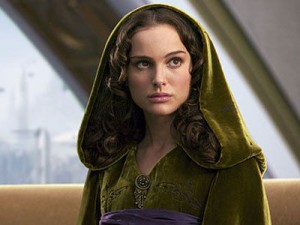 With Revenge of the Sith’s plot devoted to the tale of Anakin’s fall to the dark side and Padmé pregnant with the twins, her role in the story was naturally reduced compared to the prior films. Even then, her faith in herself was on display, including refusing to help Obi-Wan find Anakin, her decision to face Anakin herself, and her dying confidence that there was still good in him. As with Episode II, though, the cut scenes of the political subplot – including Padmé meeting with her allies in secret and a face-to-face showdown with the Chancellor himself in his office – would have helped strengthen her portrayal if they had been left in the movie, counterbalancing her more helpless, tearful scenes. Not to mention removing one ill-chosen line of dialogue on Polis Massa – that she had “lost the will to live” – and simply attributing her death to mystical “reasons we cannot explain” as Padmé dies while the black-armored Darth Vader is born.
With Revenge of the Sith’s plot devoted to the tale of Anakin’s fall to the dark side and Padmé pregnant with the twins, her role in the story was naturally reduced compared to the prior films. Even then, her faith in herself was on display, including refusing to help Obi-Wan find Anakin, her decision to face Anakin herself, and her dying confidence that there was still good in him. As with Episode II, though, the cut scenes of the political subplot – including Padmé meeting with her allies in secret and a face-to-face showdown with the Chancellor himself in his office – would have helped strengthen her portrayal if they had been left in the movie, counterbalancing her more helpless, tearful scenes. Not to mention removing one ill-chosen line of dialogue on Polis Massa – that she had “lost the will to live” – and simply attributing her death to mystical “reasons we cannot explain” as Padmé dies while the black-armored Darth Vader is born.
As we’ve seen from the comments to the What is Strong? blog earlier this week, the medical droid’s diagnosis and the actual delivery of Luke and Leia created a point of no return for some fans in how they perceived Padmé’s character. No matter how much George Lucas, Dave Filoni, the writers of the The Clone Wars, or the actresses who portray her character try to show fans that Padmé is a strong character, until they deal with the nature of her death, nothing will truly change for its impact on the broader perception of her character. Many options are possible. Maybe the droid couldn’t assess the biodata correctly because of its programming. Perhaps Palpatine was manipulating her fate from afar with the dark side. It’s possible Anakin’s life force had become mystically tied to hers, connecting back to the theme of symbiosis that played a crucial role in The Phantom Menace. Or it could be simply that Padmé should have died of her injuries far sooner than she did, but her willpower was strong enough to hold onto life until she bore her twins. In a our next Padmé-centric blog, we’ll examine the storytelling implications of the final moments of Revenge of the Sith in more detail.
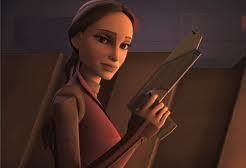 Speaking of The Clone Wars, the animated show does prove one thing about Padmé – the potential in her character to carry the narrative weight of a lore book. She is a strong if idealistic advocate for liberty, democracy, and peace, even in the face of the heavy influence wielded by Palpatine and his supporters in the Senate. She is intensely loyal to her friends, especially Bail Organa, Mon Mothma, Duchess Satine, and Ahsoka Tano, and to her political allies of all species, such as the Gungans and the Mon Calamari. Repeatedly she fearlessly risks her life to do what she believes is right, including escaping imprisonment on Rodia after unsuccessfully trying to persuade the planet’s leaders not to trust the Separatists, exploiting the romantic inclinations of an old acquaintance to root out his disloyalty to the Republic, stopping a deadly virus in a mad scientist’s laboratory on Naboo, investigating the murder of a fellow Senator in less savory districts of Coruscant, traveling behind enemy lines to meet with her old friend Mina Bonteri, and surviving an assassination attempt at a refugee conference on Alderaan by the ruthless bounty hunter Aurra Sing. Any character who can shine in adventures like these can surely support a great EU novel.
Speaking of The Clone Wars, the animated show does prove one thing about Padmé – the potential in her character to carry the narrative weight of a lore book. She is a strong if idealistic advocate for liberty, democracy, and peace, even in the face of the heavy influence wielded by Palpatine and his supporters in the Senate. She is intensely loyal to her friends, especially Bail Organa, Mon Mothma, Duchess Satine, and Ahsoka Tano, and to her political allies of all species, such as the Gungans and the Mon Calamari. Repeatedly she fearlessly risks her life to do what she believes is right, including escaping imprisonment on Rodia after unsuccessfully trying to persuade the planet’s leaders not to trust the Separatists, exploiting the romantic inclinations of an old acquaintance to root out his disloyalty to the Republic, stopping a deadly virus in a mad scientist’s laboratory on Naboo, investigating the murder of a fellow Senator in less savory districts of Coruscant, traveling behind enemy lines to meet with her old friend Mina Bonteri, and surviving an assassination attempt at a refugee conference on Alderaan by the ruthless bounty hunter Aurra Sing. Any character who can shine in adventures like these can surely support a great EU novel.
At the same time, a good Padmé story also illuminates her character flaws. Most prominent is her idealism, both political and personal, that sometimes blinds her to the pragmatic realities around her. Her absolute belief in democracy and the institutions of the Republic often causes her to underestimate the extent of the corruption in the Senate and the bureaucracy, or fail to the see the greed and other unsavory motives of Senators less devoted to the public good. Likewise, the almost avuncular manner of Palpatine’s interactions with Padmé frequently cause her to attribute noble motives to him when someone more objective would be more skeptical, and this leads her to a high degree of mistrust only when it is too late.
 The same dynamic, of course, appears in her relationship with Anakin. Much of the Prequel Trilogy is spent establishing that Anakin is a good person, and only the greatest traumas or fears cloud his judgment enough to willingly reach into the dark side. Padmé’s faith in Anakin – his heroism, his love for her, and his good intentions – makes it easy for her to forgive his mistakes. Borne of his terrible heartbreak and followed by genuine tearful remorse in the Lars homestead garage, even the slaughter of the Tusken Raiders draws out her sympathy for him. This willingness to give acceptance and forgiveness to the flawed man who helped saved her people as a young slave boy is a quality that makes Padmé relatable for many women, who have done or felt the same in their own lives; many women writing Anakin/Padmé fanfiction after Attack of the Clones explored these sorts of emotions, including sympathetic portrayals of Anakin and empathetic connections to Padmé. Yet this same unconditional love for Anakin is what leads Padmé to fail to see just how tenuous his emotional state has become after his nightmare of her death and just how dangerous the implications of his assurances to her really are. Whether as young Queen or Galactic Senator, Padmé’s idealism and faith in people – while it serves her well, just as it does her son – leaves her vulnerable to misjudgments and betrayals by those who fail to live up to her high standards.
The same dynamic, of course, appears in her relationship with Anakin. Much of the Prequel Trilogy is spent establishing that Anakin is a good person, and only the greatest traumas or fears cloud his judgment enough to willingly reach into the dark side. Padmé’s faith in Anakin – his heroism, his love for her, and his good intentions – makes it easy for her to forgive his mistakes. Borne of his terrible heartbreak and followed by genuine tearful remorse in the Lars homestead garage, even the slaughter of the Tusken Raiders draws out her sympathy for him. This willingness to give acceptance and forgiveness to the flawed man who helped saved her people as a young slave boy is a quality that makes Padmé relatable for many women, who have done or felt the same in their own lives; many women writing Anakin/Padmé fanfiction after Attack of the Clones explored these sorts of emotions, including sympathetic portrayals of Anakin and empathetic connections to Padmé. Yet this same unconditional love for Anakin is what leads Padmé to fail to see just how tenuous his emotional state has become after his nightmare of her death and just how dangerous the implications of his assurances to her really are. Whether as young Queen or Galactic Senator, Padmé’s idealism and faith in people – while it serves her well, just as it does her son – leaves her vulnerable to misjudgments and betrayals by those who fail to live up to her high standards.
The scarcity of Padmé backstory and the strengths and flaws of her character present wonderful opportunities for two sorts of Padmé lore books. One would be primarily a Naboo lore book, involving Padmé’s leadership of her homeworld. Given how sparsely the EU has developed the politics of Naboo, and how little has been mentioned about her years as Queen after The Phantom Menace, the range of challenges, dangers, or conflicts that Amidala could face are essentially unlimited. And although a book in this period obviously could not delve into her relationship with Anakin years in the future, there are numerous fantastic opportunities to portray her bonds of loyalty and friendship with her handmaidens. Not to mention the chance for cameos by characters we know are her friends and allies later, such as Bail Organa, Mon Mothma, or even Master Yoda.
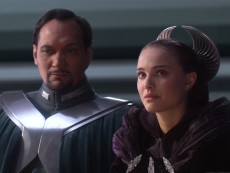 Another possible era open for exploring her lore would be her time as Senator, and could take the form of a political thriller set against the backdrop of the decline of the Republic. Between Cloak of Deception and Darth Plagueis, the political machinations of the Trade Federation crisis have been explored; the rise of the Separatist threat or the struggle to keep the secessionist faction to a minimum during the Clone Wars provide ready-made context for similar elaboration. The advantage of this time period is that it also provides the opportunity to further explore Padmé’s secret marriage to Anakin and the difficulties that concealing it causes for both of them. Even with The Clone Wars telling stories in this era, it should be easy to design an adventure or crisis for Padmé that would not contradict any other tales, and the need for operational secrecy readily provides an excuse to avoid specifying exactly what Anakin is up to at that point in the war.
Another possible era open for exploring her lore would be her time as Senator, and could take the form of a political thriller set against the backdrop of the decline of the Republic. Between Cloak of Deception and Darth Plagueis, the political machinations of the Trade Federation crisis have been explored; the rise of the Separatist threat or the struggle to keep the secessionist faction to a minimum during the Clone Wars provide ready-made context for similar elaboration. The advantage of this time period is that it also provides the opportunity to further explore Padmé’s secret marriage to Anakin and the difficulties that concealing it causes for both of them. Even with The Clone Wars telling stories in this era, it should be easy to design an adventure or crisis for Padmé that would not contradict any other tales, and the need for operational secrecy readily provides an excuse to avoid specifying exactly what Anakin is up to at that point in the war.
Either version of the Padmé book would add significant depth to EU lore. Most of all, though, it would provide a vehicle to explore Padmé’s youth, family, belief, and values. Showcasing her as the lead protagonist of a major lore book also would reinforce her importance to the overall saga, giving her a featured status on par with previous movie-character novels such as Darth Maul: Shadow Hunter, Palpatine in Darth Plagueis, the Han Solo trilogy, and Luke Skywalker and the Shadows of Mindor. A Padmé book could include foreshadowing, connections to the Prequel films, and callbacks to the Original Trilogy to bring the themes and characterizations full circle. Of course, on first blush it might seem that neither type of lore book could address the events surrounding Padmé’s death – but there are fantastic, inventive minds in the Star Wars franchise, and I’m confident, if they thought hard enough, a solution even for that would present itself.
 Much of the same rationale applies to a young Leia lore book. Unlike her mother, of course, Leia has over four decades of in-universe stories after her movie tale ends – but the great majority of that takes place when she is in her thirties and older, and a married mother of three children. In the movies, just as Padmé’s story was secondary to Anakin’s character arc in the Prequels, Leia’s (and Han’s) character development in the Original Trilogy received less attention compared to the primary arc of Luke’s Hero’s Journey. And prior to A New Hope, her backstory is nearly as sparse as Padmé’s. She has a two-issue solo arc, Princess … Warrior, in volume 4 of the Empire comics, several brief onscreen appearances in The Force Unleashed as the Rebellion is formed, and few cameo appearances in fiction and sourcebook references. Otherwise, her backstory is essentially a blank slate, leaving plenty of room to develop the pivotal events of her formative years and lay the groundwork for the familiar characterization of future years – and if the novel were to focus primarily on a single discrete mission or adventure, as most EU books do, the interactions with existing continuity would be relatively easy to manage. Given Leia’s troubled relationship with Darth Vader in the years ahead, it would be particularly rewarding to see her bond with Bail Organa and witness how her healthy relationship with her adoptive father shaped her into the woman and leader she became, and passed on to her so much of her mother’s commitment to freedom and justice.
Much of the same rationale applies to a young Leia lore book. Unlike her mother, of course, Leia has over four decades of in-universe stories after her movie tale ends – but the great majority of that takes place when she is in her thirties and older, and a married mother of three children. In the movies, just as Padmé’s story was secondary to Anakin’s character arc in the Prequels, Leia’s (and Han’s) character development in the Original Trilogy received less attention compared to the primary arc of Luke’s Hero’s Journey. And prior to A New Hope, her backstory is nearly as sparse as Padmé’s. She has a two-issue solo arc, Princess … Warrior, in volume 4 of the Empire comics, several brief onscreen appearances in The Force Unleashed as the Rebellion is formed, and few cameo appearances in fiction and sourcebook references. Otherwise, her backstory is essentially a blank slate, leaving plenty of room to develop the pivotal events of her formative years and lay the groundwork for the familiar characterization of future years – and if the novel were to focus primarily on a single discrete mission or adventure, as most EU books do, the interactions with existing continuity would be relatively easy to manage. Given Leia’s troubled relationship with Darth Vader in the years ahead, it would be particularly rewarding to see her bond with Bail Organa and witness how her healthy relationship with her adoptive father shaped her into the woman and leader she became, and passed on to her so much of her mother’s commitment to freedom and justice.
Finally, a Padmé or Leia lore book has the potential not only to generate excitement from dedicated EU fans interested in the new lore and movie fans interested in a story about one of the main characters, but also from female EU fans who have been clamoring for more stories about female protagonists and heroic characters.
For more of this series check out The Power to Save Padmé.
B.J. Priester is editor of FANgirl Blog and contributes reviews and posts on a range of topics. A longtime Star Wars fandom collaborator with Tricia, he is also editing her upcoming novel Wynde. He is a law professor in Florida and a proud geek dad.











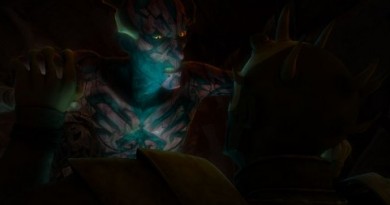
IIRC, there are a couple Padme-focused books aimed at young readers. Trying to look at it from a publisher’s perspective, I’d be concerned about her age before and during TPM–she’s only fourteen, not really a protagonist age that appeals to an adult audience. (Personally, I’d still read a YA book along those lines.) I agree that a book set during her career as a senator would be great, though. She clearly has a reputation by the time we see her in AOTC, I’d love to see where that came from and how she built up the senate’s respect for her.
I’m really enjoying this series, by the way. I adored Padme when I was a wee little thing watching TPM, but she became such a painful example of the way female characters are marginalized in this sort of media that she’s hard to think about. Her death is like a slap in the face–“You have served your purpose as a womb, now go away so we can focus on the (more important) male characters’ pain.” Thank goodness we never get that message with Leia.
“To some extent, Padmé’s perception probably suffers because her clearest, strongest characterization comes in the least popular of the Prequels, The Phantom Menace.”
Oh, bullcrap on the “least popular” nonsense. Least popular according to whom, the fanboys of the internet? It drives me nuts when people perpetuate things they have no factual basis for asserting.
People are well aware of Padmé’s heroism in TPM and AOTC. The complainers have two specific problems: she fell in love with Anakin and she died after giving birth. I’m not sure what kind of woman we’re supposed to have seen with the future Darth Vader and what would have been a better fate for Padmé. Her fate was sealed from the get-go, since she was not in Eps IV-VI.
I agree it would be great to read about Padmé’s time in the Senate as well as Leia’s pre-ANH life.
I don’t have a scientific poll, obviously, but I’ll stand by my anecdotal evidence. I’m not relying mainly on the internet fandom. I’ve talked to hundreds of Star Wars fans over the years, including hard-core movies and EU fans at Celebrations (and yes, if you’re at Celebration you’re a hard-core fan in my definition) and many more casual fans at the office. I make no secret of my Star Wars obsession at work, and my colleagues and law students talk to me about it all the time.
For comparison, I think it’s equally fair to say that ROTJ is the least popular of the OT films. Which doesn’t mean people dislike it – only that, if you ask people their favorite OT movie, nearly everyone says ANH or ESB. A few say ROTJ, but only a few. The same is true in the PT; if you ask people’s favorite, you hear a lot of ROTS and some AOTC, but not a lot of TPM.
This matters because it affects people’s choices about which Star Wars movie they watch with their limited time. If I decide to pop in a Blu-ray to watch for fun myself, for example, I’m more likely to pick ANH or ESB than ROTJ.
I think this dynamic actually does matter to people’s perceptions of the characters, including how aware they really are (or aren’t) of Padmé’s heroism. I’ve talked to a lot of fans who’ve seen the PT something like this: TPM 2 times, AOTC 3 times, ROTS 5 times. That person might very well have a different assessment of Padmé than someone who’s seen each of the movies an equal number of times – or someone who’s seen TPM 15 times regardless of how many times they’ve seen the others. And that’s been my experience with a lot of the fans I’ve talked to – they view Padmé as a considerably less strong and heroic character than Leia in the OT. But they often come around if you can get them thinking about TPM Padmé instead of ROTS Padmé. (Certainly people who’ve been watching TCW all along have picked up a very different perspective on pre-ROTS Padmé, too.)
I definitely agree with you, though, that the criticisms from many fans come from either their dislike of the romance storyline in AOTC or the manner of Padmé’s death in ROTS, or both. There’s not a lot that can be done with the story within AOTC itself, and the novelization is already out there, but a Clone Wars era novel could help fill out Padmé’s emotions a bit more and help add to the relatability of her feelings for Anakin for those fans who are skeptical. There’s a lot more to say about her death, so we’ll be getting to that in the next Padmé blog.
and since 2002 I have thought that the film’s portrayal of Padmé would have been improved if those elaborations had been included
Completely agree. Padme’s story–both as a character and the love story between she and Anakin–was hindered greatly by the loss of those scenes.
The sheer lack of Padme in the EU is quite frankly, ridiculous. Ignoring such a popular and great character only harms the fandom.
Greatly enjoyed this blog entry.
Pingback:What Is Strong? « fangirlblog.com